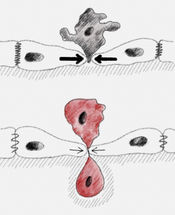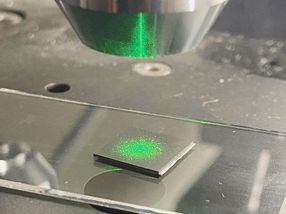Annuals converted into perennials
Only two genes make the difference between herbaceous plants and trees
Scientists from VIB at Ghent University have succeeded in converting annual plants into perennials. They discovered that the deactivation of two genes in annuals led to the formation of structures that converted the plant into a perennial. This was most likely an important mechanism in plant evolution, initiating the formation of trees.
Annual crops grow, blossom and die within one year. Perennials overwinter and grow again the following year. The life strategy of many annuals consists of rapid growth following germination and rapid transition to flower and seed formation, thus preventing the loss of energy needed to create permanent structures. They germinate quickly after the winter so that they come out before other plants, thus eliminating the need to compete for food and light. The trick is basically to make as many seeds as possible in as short a time as possible.
Perennials have more evolved life strategies for surviving in poor conditions. They compose perennial structures such as overwintering buds, bulbs or tubers. These structures contain groups with cells that are not yet specialised, but which can later be converted when required into new organs such as stalks and leaves.
Annual crops consume all the non-specialised cells in developing their flowers. Thus the appearance of the flower signals means the end of the plant. But fortunately they have left seeds that sense – after winter – that the moment has come to start up. Plants are able to register the lengthening of the days. With the advent of longer days in the spring, a signal is sent from the leaves to the growth tops to activate a limited number of blooming-induction genes.
VIB researchers, such as Siegbert Melzer in Tom Beeckman's group, have studied two such flower-inducing genes. They have deactivated them in thale cress (Arabidopsis thaliana), a typical annual. The VIB researchers found that mutant plants can no longer induce flowering, but they can continue to grow vegetatively or come into flower much later. Melzer had found that modified crops did not use up their store of non-specialised cells, enabling perennial growth. They can therefore continue to grow for a very long time. As with real perennials these plants show secondary growth with wood formation creating shrub-like Arabidopsis plants.
Researchers have been fascinated for a long time by the evolution of herbaceous to woody structures. This research clearly shows only two genes are in fact necessary in this process. This has probably been going on throughout the evolution of plants. Furthermore it is not inconceivable this happened independently on multiple occasions.
Original publication: Siegbert Melzer et al.; "Flowering-time genes modulate meristem determinacy and growth form in Arabidopsis thaliana"; Nature Genetics 2008.
Most read news
Other news from the department science

Get the life science industry in your inbox
By submitting this form you agree that LUMITOS AG will send you the newsletter(s) selected above by email. Your data will not be passed on to third parties. Your data will be stored and processed in accordance with our data protection regulations. LUMITOS may contact you by email for the purpose of advertising or market and opinion surveys. You can revoke your consent at any time without giving reasons to LUMITOS AG, Ernst-Augustin-Str. 2, 12489 Berlin, Germany or by e-mail at revoke@lumitos.com with effect for the future. In addition, each email contains a link to unsubscribe from the corresponding newsletter.




















































